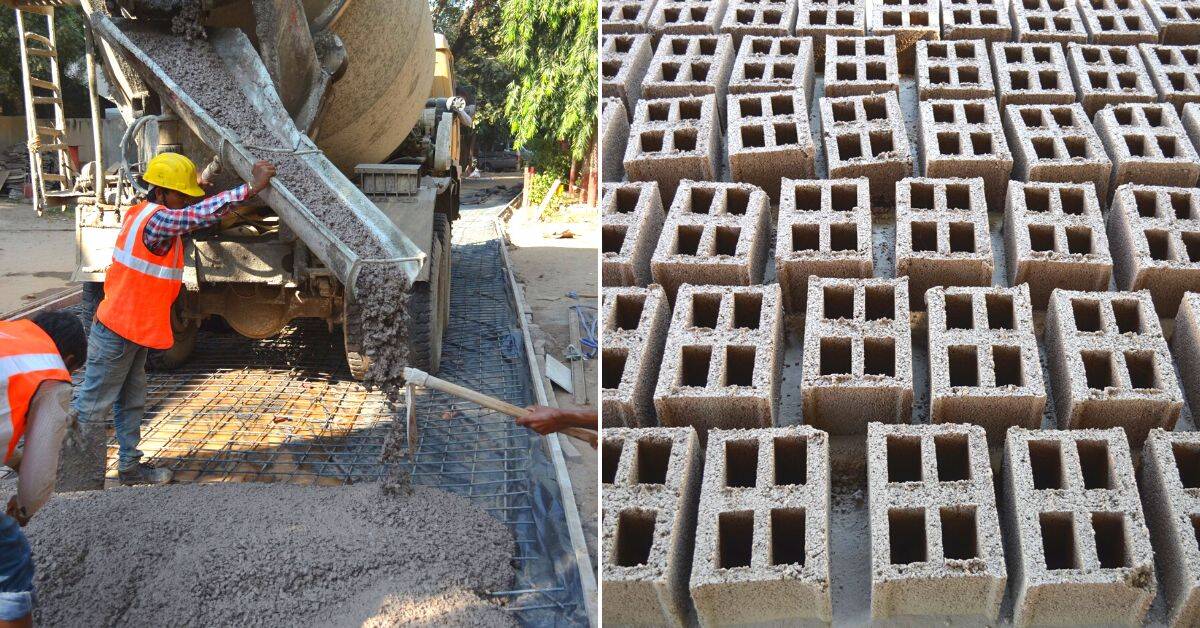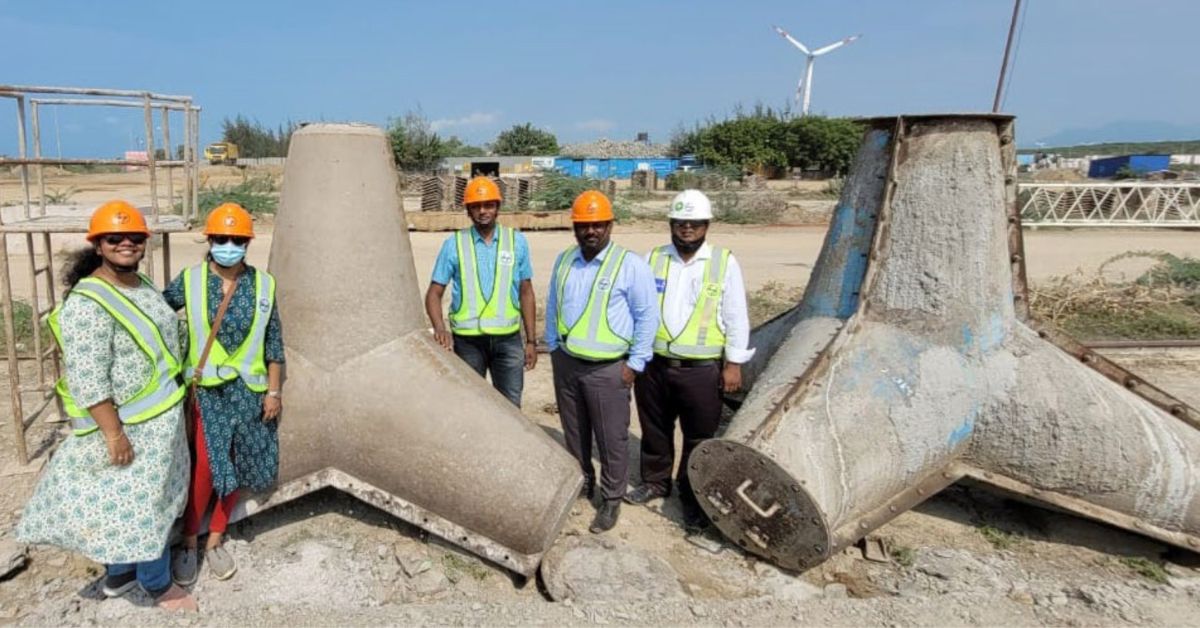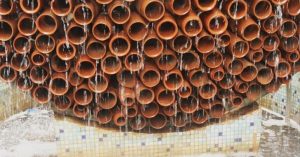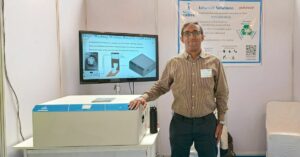Sustainable Cement? IITs & Global Institutions Find Way to Cut CO2 Emission By 40%
A collaboration of global institutes and IITs has found that Limestone Calcined Clay Cement, or LC3, is a sustainable alternative that cuts CO2 emissions by 40% and is significantly cheaper to produce.

In a recent report, the Reserve Bank of India said that the country’s desire to reduce the economy’s carbon intensity by 45% by 2030 “necessitates a policy relook across sectors, especially where carbon emission is high”, and that the “cement industry is one of them”.
Given that over 250 million people are expected to be added to India’s urban population in the next two decades, which will translate to growing demand for building materials like cement, it’s imperative to find more sustainable and less carbon-intensive solutions.
There is the option of not employing cement at all, but given its strength and durability, it’s the material of choice for many in the construction industry.
But ordinary portland cement, which ranks among the most common types used, consists of 95% clinker. A major raw material for the clinker-making is usually limestone mixed with a second material containing clay as a source of alumino-silicate.
Universally, technologists have opined that one of the primary means of reducing the net carbon impact of concrete construction would be using less cement clinker in concrete.
Going further, it also requires the judicious use of by-product materials from mining, agriculture, and industry and minimise wastages through better construction techniques.
“Building construction and operation is responsible for more than 25% of global CO2 emissions. While the operational CO2 is sizable, there is a considerable component of embodied CO2 that causes nearly 8% of the total global emissions. Cement production requires the burning of limestone at temperatures of 1,450 – 1,500 degrees Celsius, which leads to the liberation of nearly 0.8 kg equivalent of CO2 for every kg of cement produced,” says Prof Manu Santhanam, dean (Industrial Consultancy and Sponsored Research), IIT Madras, in a conversation with The Better India.
Responding to this challenge, a global research initiative called the LC3-Project, which includes institutions like IIT Madras, IIT Delhi, TARA (Development Alternatives) New Delhi, UCLV (Central University “Marta Abreu” of Las Vilas) in Cuba and EPFL (Swiss Federal Institute of Technology Lausanne) in Switzerland, have explored a possible solution.
So, what is the solution?
Called Limestone Calcined Clay Cement (LC3), it’s a blended cement incorporating Portland cement clinker, calcined kaolinitic clay and limestone, in combination with gypsum.
However, in this case, the extent of cement clinker is restricted to only 50%, which implies a major reduction in the CO2 emissions. After all, the production of clinker involves the burning of limestone. Going further, the clay used in LC3 is usually a non-ceramic grade raw material extracted from China clay mines including the overburden, while the limestone used in the blend can be from low grade sources that are not suitable for cement manufacture.
Worldwide, experts believe that the best way to reduce the cement-related embodied CO2 is to substitute the cement with supplementary materials.
“In this regard, limestone calcined clay cement, where nearly 50% of the ordinary cement is replaced by the blend of limestone (which is in an unburnt form) and calcined clay (which is produced by burning clay with around 40-60% kaolinite, often found as waste in kaolinite mines, at about 800 C), is a promising alternative. At the same level of concrete strength, this blend is able to improve the long term durability of the concrete significantly over ordinary portland cement, thus increasing the service life of the structure,” explains Professor Santhanam.
As per a recent press release issued by IIT-Madras, sustainability impact assessment by these institutions “has clearly demonstrated a reduction of nearly 40% of CO2 emissions, and about 20% lower energy for production of LC3 as compared to ordinary Portland cement”.
Meanwhile, research conducted in India has shown that the concrete produced with this cement exhibits excellent strength and durability characteristics.
“In terms of heat or sound insulation, LC3 works similar to ordinary cement. However, durability is the ability of the concrete to withstand the service environment without deterioration. In coastal zones, chlorides can severely restrict the life of the structures since their penetration into the concrete structure can lead to corrosion of the reinforcing steel,” explains Prof Santhanam.
However, in this scenario, the use of LC3 makes concrete “impervious to the entry of chlorides” and “significantly reduces the chances of steel corrosion”.
Looking ahead, the cement standard is about to be released by the Bureau of Indian Standards. Once published, companies can take commercial manufacture of the cement . Funding for this initiative has come from the Swiss Agency for Development and Cooperation through its Global Programme in Climate Change.
“In the meantime LC3 has been used in some demonstration structures, including some houses (for RCC and plaster, as well as for precast hollow core slabs), pavements, and even specialised elements such as Tetrapods that are used in breakwater structures,” he notes.
In India, the most prominent project is the model Jhansi, India.
Constructed in 2014, the house “is made 98% out of LC3 and it used 26.6 t of industrial waste (192 kg/sqm) and saved 15.5 t of CO2 (114 kg/sqm). These CO2 savings are similar to the emissions of 10 passengers travelling by plane from Switzerland to South Africa,” states the website.

Not a solution found overnight
“See, the use of limestone as cement replacement (up to 5 – 10%) or calcined clay as cement replacement is not new. However, research between 2005 and 2010 performed at EPFL in Lausanne (Switzerland) along with UCLV Cuba led to the initial understanding of the triple blended system of cement, limestone and calcined clay. Subsequent understanding of the chemistry of this system led to the development of the cement,” notes Prof Santhanam.
Following the entry of the teams from India (IIT Delhi, TARA and IIT Madras), the research process was considerably accelerated and we could create a vast database of knowledge in the field.
“IIT Madras was specifically involved in the research on the use of the cement in concrete, and the resultant strength and durability properties,” he adds.

More on sustainability?
LC3 is a general-purpose cement and its production does not require the setting up of a green field unit. “It can be easily integrated into an existing production system. Due to lower energy requirements, it is also around 25% cheaper to produce depending on the availability of clay. With a clear impact on the environment, society, and economy, LC3 is poised to enhance the sustainability of concrete construction,” notes the release
Elaborating on the need for sustainable construction materials like LC3, Dr Soumen Maity of TARA New Delhi said, “With the shift of government priority to renewable energy, the availability of fly ash is going to be constrained. The LC3 or Limestone Calcined Clay Cement provides a profitable and technically viable option of reducing the carbon emissions in existing cement production. It can easily be integrated into the existing production system thus reducing the need for high capital expenditure. TARA, along with academic Institutions, are supporting cement companies to initiate the change to more sustainable cement production.”
(Edited by Divya Sethu)
Additional sources:
‘India’s central bank wants its cement industry to use tech to lower emissions’ by Mayank Aggarwal; Published on 22 April 2022 courtesy Quartz India
‘Cement clinker’ courtesy Wikimedia Commons
This story made me
-
97
-
121
-
89
-
167
Tell Us More
If you found our story insightful, informative, or even just enjoyable, we invite you to consider making a voluntary payment to support the work we do at The Better India. Your contribution helps us continue producing quality content that educates, inspires, and drives positive change.
Choose one of the payment options below for your contribution-
By paying for the stories you value, you directly contribute to sustaining our efforts focused on making a difference in the world. Together, let's ensure that impactful stories continue to be told and shared, enriching lives and communities alike.
Thank you for your support. Here are some frequently asked questions you might find helpful to know why you are contributing?




















